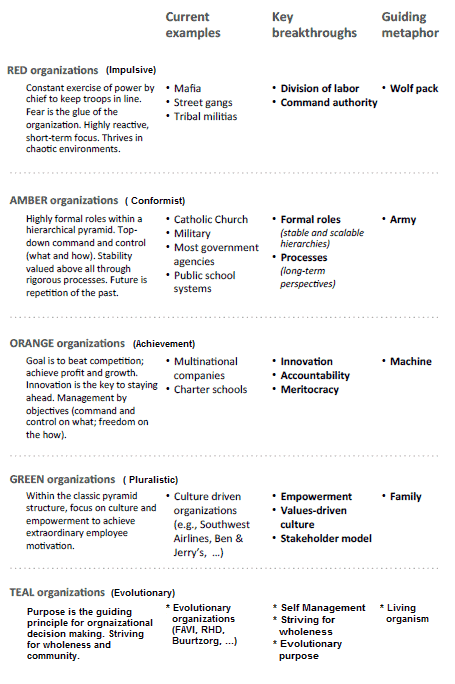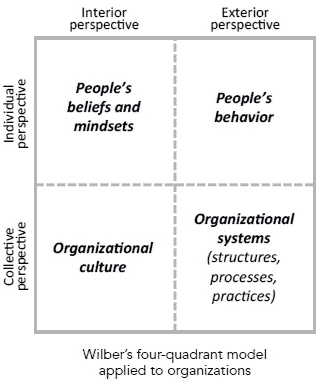Corporate Culture is a topic filled with feel good, fluffy ideas and a lot of empty promises. Everyone strives for it, but it's rare to deliver well on it. It feels like it's even rarer to find good, helpful, actionable content on it.
That's why I'm excited to have Lighthouse friend and author of the Evergreen Business Weekly, Eric Jorgenson, once again writing a guest post for us. In this post, Eric shares what some of the best companies in the world have done to create great cultures, from software to steel manufacturers, as well as corporate culture's origins, and how to measure and manage it.
If you enjoy this deep dive on Corporate Culture, I highly recommend you sign up to receive all his posts here. Evergreen has also guest-posted on Lighthouse on Performance Reviews, Employee Retention, Firing, and Organizational Communication
Evergreens are designed to feel like short books, you're meant to meander and spend ~3 hours on this topic this week. Save some of these links and read them throughout the week. Immerse yourself in this topic and leave the week smarter than you started! Join here to receive the next Edition of Evergreen Business Weekly.
The Unfiltered Truth About Corporate Culture
Corporate Culture is an annoying subject to research. It's a mushy marshland of vague language, incomplete re-definitions, with lots of navel-gazing and self-congratulating. Writing about Culture is the acceptable way to brag about your company on your own blog, and not-so-subtly recruit the reader.
I happened to learn the word ‘Bloviating' this week, and that seems like the perfect way to describe 99% of the writing on this topic.
Happily, that's exactly why we're here — to get right into that 1% of meaningful resources on a topic that is crucial to building a successful business.
Here's what we have this week:
- Where Corporate Culture Comes From
- How to Measure, Codify, and Classify Culture
- Implications of Culture
- Examples and Studies of Strong Cultures
Where Corporate Culture Comes From
It turns out to be a complicated question. While there are identifiable factors that affect Corporate Culture, the true source is as complex and varied as the organization itself. As Simon Sinek says in Start With Why:
"Your company doesn't have a culture. It is a culture."
This may seem an unnecessary distinction, but many truths are hidden in this simple sentence. Culture is ever-changing, evolving minute by minute.
Your culture is the outcome of decisions made by your organization, and it is the input for the next decisions made by your organization.
Sinek's quote reminds me that cultures cannot be transferred, installed, or added — they can only evolve from the culture you already have. The starting conditions have already been set in motion in you as the founder even if the company hasn't been founded yet.
80% of Culture is your Founder
It's a foundational rule of culture that companies will grow up to emulate the personalities of the founders. This is the lesson of this great post by Molly Graham, former Culture Manager of Facebook.
"Companies tend to reflect everything about them — their personality, strengths, weaknesses. So when you start defining culture in an intentional way, first look at yourselves.[…]
If a founder is competitive, the company will be more aggressive and competitive. If they are analytical and data-driven, the company will tend to make metrics-based decisions."
Founders tend to hire, promote, and retain employees who are similar to them in their disciplines and approach. This scales their outlook on life and work, casting a giant shadow in their own shape.
"When Facebook first started to grow, Mark Zuckerberg spent time asking other CEOs about some of the things they did early on at Microsoft, Apple, and others to establish culture and explain to people what it meant to work there. One of the best pieces of advice he got was to write down a succinct list of what it meant to be "one of us.”
The practical implications here are that if you're going to go work at a company, look at the founder — if you don't want to be more like them, it's probably not a great match for you.
And for those starting or leading companies, work on the self-awareness of your strengths and weaknesses, because that's what your company will be built upon. The example you set will define your culture.
Thanks to Brandon Redlinger for contributing this great post!
Creating Culture (Lessons from Bonobos)
This great post from Bonobos Founder, Andy Dunn, is full of uncommon cultural wisdom. His perspective on the importance of firing is the best kind of writing — clear, concise, surprising, and correct:
"The most important people to the culture are those who leave. This is hard to say because it sounds mean: the people you fire are more important to your culture than the people you hire.
It's a half-truth, as you have to hire people who are outstanding, but it's an important half-truth because the best way to protect the environment is to recognize where you have erred and course correct. You reveal that culture as a by-product of who stays and who goes, and to effectively "experiment” your way into what your culture is by learning who fits and who doesn't — and by learning what precisely it is they are fitting into.
To do this requires courage and confrontation. You muster both of these by telling yourself it's what you must do to make the company "safe” for your best people, who should — by the way — be the only people."
The other important piece in this post is his attention on the context — it's a broad category, where millions of tiny choices add up to create the culture.
"Now we've got fish, but no water. The other part of culture is the context in which people operate, which is influenced by a myriad things: goals, feedback, promotions, compensation, physical space, how people organize outside of work, social norms, how people talk, whether debate is promoted or squelched, how conflict happens, how hard people work, what's celebrated and what's left unsaid."
That's a beautiful list of cultural factors — probably not comprehensive, but it includes some subtle and important intangibles like celebrations and how people talk. The list of things that make up and are defined by culture is longer than you would first think. Great insight from Dunn, and many thanks to my friend Derek Baynton of Offsite for introducing me to this post.
Don't F*!% Up the Culture
In 2013, Airbnb co-founder Brian Chesky (Ed. note: who has an amazing leadership profile in Fortune) wrote a letter to his company called "Don't F*!% Up The Culture” — it's now a classic in Startup Culture reading.
It's title of a message to Chesky from Airbnb Investor Peter Thiel. The letter explains why maintaining the culture is so important:
"Why is culture so important to a business? Here is a simple way to frame it. The stronger the culture, the less corporate process a company needs. When the culture is strong, you can trust everyone to do the right thing.
People can be independent and autonomous. They can be entrepreneurial. And if we have a company that is entrepreneurial in spirit, we will be able to take our next "(wo)man on the moon” leap.
Ever notice how families or tribes don't require much process? That is because there is such a strong trust and culture that it supersedes any process. In organizations (or even in a society) where culture is weak, you need an abundance of heavy, precise rules and processes."
In ‘A Critique of Don't F*!% Up The Culture' Scott Berkun, a best selling author and former software engineer, works on refining some of Brian Chesky's definitions, and finding context for how those points work over longer time scales.
First, Berkun echoes the lesson above, about the founder's out-sized impact on the culture, how employees are really ‘along for the ride.'
"Every CEO is in fact a Chief Cultural Officer. The terrifying thing is it's the CEO's actual behavior, not their speeches or the list of values they have put up on posters, that defines what the culture is. Without these four powers (Hiring, Firing, Promoting, Punishing) any employee at the company is along for the ride in a culture driven by someone more powerful than they are."
And some of the challenges of living up to those cultural values, when they're challenged by employees:
"The most vocal challengers to most cultures are the first to be shown the door. It's in human nature to want to eliminate the most disruptive people. And it's also human nature to want to bring in more people that fit in well. Repeat these two behaviors over time and culture becomes homogeneous, even if everyone still believes the culture values diversity."
Cultural momentum is very difficult to shift, and moves only in small increments — especially when driven forward heavily by a strong-willed founder or CEO. This is why self awareness is so critical; whether you make the act with intention or not, a culture is developing as a consequence of your actions.
Thanks to Aaron Johnson for contributing these posts and their ideas.
How to Measure, Codify, and Classify Culture
With the recursive nature of Corporate Culture — where each decision affects the culture, which then influences the next decision, it's important to realize that perception becomes reality. Each decision as you navigate the path for your evolving culture has consequences that impacts your team. In other words:
"Your culture is not what you think it is — it is what the team thinks it is."
If you fire someone for a perfectly valid reason that upholds your cultural values, but the story that the team hears is something different, it will put a dent in their perspective of the culture, and therefore the culture itself. Their perception becomes your culture's reality.
‘Measuring' your culture will help you understand the possible gap between your and your employees' perceptions. This is difficult with such an amorphous concept as culture, but we found some great thoughts on this.
How to gather data on your culture's reach
Justin Moore, CEO of Axcient, believes culture is a necessary component of any successful company. In the old paradigm of ‘What gets measured gets managed', he has undertaken to measure and manage his culture precisely.
"You can ask dozens of different employees what the company's culture is and find that each person will respond with something unique. A good way to figure out how ingrained your values are is to take impromptu verbal surveys — if more than 80% of the employees can repeat the company's stated values almost verbatim, something is working."
While recitation isn't necessarily compliance, let alone fully embracing and practicing those values — it is a good test of a company's internal communication. That's an important first step to full permeation of those cultural values.
"Moore uses biannual surveys and bench marking to figure out how people feel about the organization. As a leader, this not only gives you a sense of how you're doing, but it also allows employees to feel responsible and to be a part of improving the culture and the company."
Measuring trends in this data will give you a sense of whether your culture is moving in a ‘positive' direction, or breaking under the strain of growth or other changes. The sooner you learn about cultural degradation and weakening of the values, the easier course correction will be.
Thanks again to Brandon Redlinger for this one!
How to Classify a Culture
Another couple of great culture insights again comes from San Francisco's master of startup culture building, Brian Chesky. This time, from his talk at Stanford:
Chesky makes the point that there's no such thing as Good or Bad culture, only Strong or Weak culture.
I find this mostly true — the good or bad axis exists, but it is subjective. A good culture for one person could be bad for someone else. We should all seek the self-awareness and courage that allows us to find the culture in which we thrive.
In the Strong vs. Weak axis, Chesky does not give us a definition, but my perspective is that cultures are Strong to the degree that they are honest, clear, and reinforced.
- Honest cultures are born of self-assessment and embrace the virtues and faults of leaders and their organizations. This honesty is the prerequisite of clarity.
- Clear cultures are defined. They make hard decisions to precisely describe who/what is and isn't a culture fit in a way that deliberately excludes huge chunks of the population and their beliefs (in the same way strategies must be well defined).
- Reinforced cultures are practiced. They have well-worn pathways, and decisions can be made reflexively because of the clarity of the culture and obvious prioritization of values.
Thanks to Terry Lee, Marco Scolaro, and Benjamin Kinnard for recommending Chesky's excellent talk.
Reinventing Organizations (and How to Classify Them)
The most commonly-recommended book on the topic of Corporate Culture was Reinventing Organizations, which has come up a few times in conversation over the past few weeks. I haven't read it personally, though I trust Itamar to know a good book when he sees one, and he called it the best book of 2014.
On Itamar's blog, he pulls out a few of the most interesting pieces. Here's the breakdown of organizational classification that is the heart of the book:
He studied an impressive set of organizations who have already made or are in the process of making the paradigm shift, and distilled the commonalities into three major innovations: self management, striving for wholeness, and evolutionary purpose.”
But not stopping there is what turns this book from an average to a very good one. For each of these innovations, Laloux provides detailed descriptions of how the core organizational structures, processes and practices change as a result. From decision-making, through hiring, firing and promoting, all the way to the squishy topic of organizational culture.
Another interesting insight into analyzing and classifying cultures from Reinventing Organizations is this matrix, based on different perspectives to observe the same organization in different ways:
Laloux argues that in order to fully comprehend an organization, we must look at four things: people's beliefs and mindsets; people's behaviors; the organizational culture; and the organizational structures, processes and practices.
Seeking out new perspectives is always a helpful exercise, and this simple framework allows us to see some of the components of Culture in new ways.
Thanks to Itamar for doing the legwork and contributing great ideas!
Implications of Culture
What is the impact of culture? Why does it matter? Is this just some fluffy feel-good BS, or does it actually change the outcome?
James Beshara, founder of Tilt, has a fantastic talk at Stanford's Entrepreneurial Thought Leader Series. In this talk, he uses the metaphor of bricks vs. mortar to explain the non-obvious importance of concepts as he's learned them. As he says, "it's the stuff between the bricks that makes all the difference.”
So which of these is culture?
"Strategy would be the bricks — culture is the mortar."
A solid brick wall instead of a stack of bricks means your house will stay standing in a hurricane. The difference between a good strategy, and a strategy held together with strong culture can mean success over failure.
The Relationship Between Culture and Brand (Zappos)
I respect a lot of the cultural innovations from Tony Hsieh at Zappos. They're one of the most popular advocates for building culture as a means of creating excellent service. What that means is summed up in this beautiful sentence:
"Culture is the Leading Indicator of Brand"
If leaders of the company build a strong culture that shows employees love and care, employees will treat customers with that same love and care — and customers will know that the company loves and cares.
Tony Hsieh is full of these pieces of wisdom, after years of building Zappos as a beacon of a strong culture. His story and his lessons are in his book, Delivering Happiness. If you want the cliffnotes version, here is a blog post from KISSmetrics with some of the best quotes from the book.
Thanks to Eugene Tsyrklevich for sharing this post and these ideas!
On High Performance Cultures
The mere mention of ‘culture' seems to evoke softness — butterflies and teatime and endless sharing sessions. That's not how Cliff Oxford thinks about Culture.
He makes the distinction between ‘Human Resources Happy' (meaning content in life, relaxed, balanced, at ease), and ‘High Performance Happy' in his NY Times article. Here's what he means by ‘High Performance Happy:'
"Think of an Olympic athlete jumping into the pool for those 4:30 a.m. laps.
High Performance Happy is an attitude with a skill set that says we are on a mission that is bigger than any one of us. We find our happiness in being on a world class team that is making a difference.
High Performance Happy means you give employees tremendous responsibility, and they are happy to show that they are the best. You don't have to con them into doing things with a flavor-of-the-month methodology that suggests they will only perform if you make them happy first. H.R. Happy says, I want you to think that I like you. High Performance Happy says, I believe in you."
In the rest of his article, he goes on to describe how to build and maintain a high-performance culture. Worth a read for those working on building teams in high-growth, high-pressure environments.
A Dominant Culture in a Surprising Industry
How much of a difference can culture make? The best answer to this question I found was the example of Nucor Steel. They manufacture steel and steel products, and have since 1940.
In an incredibly competitive, unsexy, backbone-of-America, factory-floor, commoditized industry they've managed to become the largest steel company in America, completely destroying their competitors year after year. How? A strong culture.
This exploration published on Bloomberg of the company, and its employees fanatic dedication to producing good work is the most unexpectedly fascinating and instructive piece about Corporate Culture I've ever read.
Here are some highlights:
"At Nucor, the art of motivation is about an unblinking focus on the people on the front line of the business. It's about talking to them, listening to them, taking a risk on their ideas, and accepting the occasional failure. It's a culture built in part with symbolic gestures. Every year, for example, every single employee's name goes on the cover of the annual report."
Also, Nucor has a radical compensation policy, which is very closely tied to the customer's outcome in it's dealings with the company:
"A bonus tied to the production of defect-free steel by an employee's entire shift can triple the average steelworker's take-home pay. […]
If workers make a bad batch of steel and catch it before it has moved on, they lose the bonus they otherwise would have made on that shipment. But if it gets to the customer, they lose three times that."
These are exactly the kind of tough decisions that make a strong culture. Priorities are clear. They are well defined and thoroughly reinforced. Employees are accountable for the success of the company. Not everyone will be happy working here, and that's by design.
This steel manufacturer has lot to teach companies in every industry about building and reinforcing a strong culture.
In this is an interesting thought: It is easy to build strong cultures at sexy and fast-growing consumer startups and widely-known brands. It is much harder to craft a strong culture at an unknown utility buried deep in the supply chain — but the benefits to the company are far greater.
Airbnb has undoubtedly built a strong culture. And they had every advantage on the way there. Nucor crafted an equally strong culture from a far more difficult starting place. Both of them have things to teach us.
In any company in any industry, strong cultures can be crafted, and we can learn from every attempt, whether or not it succeeds.
Examples and Studies of Strong Cultures
As a final resource for those who want to dig deep into strong cultures, here are a few documents from some of the most admired cultures in software and technology. Explore these and see what you can find. If you have other suggestions, comment with them here and I'll add them!
- Valve Software Handbook — An icon of cultural freedom in gaming
- Netflix — The most famous corporate culture doc west of Mississippi
- Hubspot — A corporate culture darling of Boston
If you enjoyed this, you'll get more like it fortnightly by joining Evergreen.
Never Enough
As my Father always says: "There's always room for the best.” There's always a better resource out there. These collections can always get better, and I hope that they do. If you can think of anything that was missed, I welcome you to share it.
Please share your thoughts, improvements or additions, in the comment section below.









